Marrakech is a city that left its mark on me. At times it can be overwhelming, and if you’re new to travelling or not used to huge volumes of people in small spaces/people approaching you, then it can be a challenge. That said, it’s a city that offers so much and I really enjoyed immersing myself in all the unique experiences it has to offer. I’d even go as far as describing the city as magical; it truly exceeded my expectations.
I’ve collated my favourite experiences in to a perfect itinerary across 2 days, though as the city is so busy and full on, I actually did these things across 3 days to spread them out and have some down time to avoid sensory overload! So whether you have 2 or 3 days – let’s go!
Contents
- Contents
- Marrakech Information
- Is Marrakech safe?
- 2 Day Marrakech Itinerary
- Where to stay in Marrakech
Marrakech Information
Language & Time zone
The two official languages in Morocco are Arabic and Moroccan Berber. Due to its colonial history, French is also widely spoken, and most visitors we encountered were French speaking. English is spoken in the main tourist areas, but much less so outside of the main cities.
Marrakech is normally +1hr GMT, however during Ramadan (when I visited) there is no time difference to the UK.
Useful tips for Marrakech
- You can’t buy Moroccan Dirhams outside of Morocco, so bring your local currency with you to exchange (to save on having to get cash out at an ATM for a fee).
- You will need cash, all bar 2 attractions in this entire itinerary only took cash, and taxis only take cash as well.
- Marrakech is a Muslim country so it’s important to be aware and respectful of local customs. If you’re visiting during Ramadan (as I did), many restaurants close and you cannot eat or drink in public.
- It is illegal to be gay in Morocco. I cannot speak from that perspective or experience, but please be mindful of it if it’s relevant to you.
- Getting around Marrakech can be stressful. Whilst the Medina area is wholly walkable, getting out further means depending on taxis and having to haggle taxi prices. If your hotel isn’t in the Medina, it’s worth checking with your hotel if they run a free shuttle and/or can provide you contact details of a known taxi driver.

Is Marrakech safe?
A lot of people worry about whether Marrakech is safe. Whilst no travel can ever be guaranteed 100% safe, I can honestly say it was totally fine for me. As with any major city just be mindful of your belongings as pickpocketing is common, and take reasonable precautions, including not walking along looking at your phone, which was by far the biggest hazard causer we encountered in crowded spaces. Motorbikes/scooters speed through the Souks, and we saw 3 tourists (all glued to their phones) knocked over, with one hurt – so please stay alert.
People worry about the hassling in the Souks, but I didn’t find it too bad. I wasn’t approached that many times, and a firm no was enough when I was and wasn’t interested. I also visited the Medina solo one day and wasn’t hassled. I just recommend being respectful of local customs and covering up so that shoulders and knees aren’t on show.
However, I do have to highlight poor Moroccan Health and Safety. A close friend who is my direct report at work went on holiday to Marrakech last year (2023) with a group of friends, staying at the 5* Jaal Riad resort. One of his friends went for a massage but a fire broke out and he was trapped in the room – he died, along with his masseuse. So please be mindful of health & safety here, even in 5* resorts. If a fire broke out in the Souks, I dread to think what would happen.
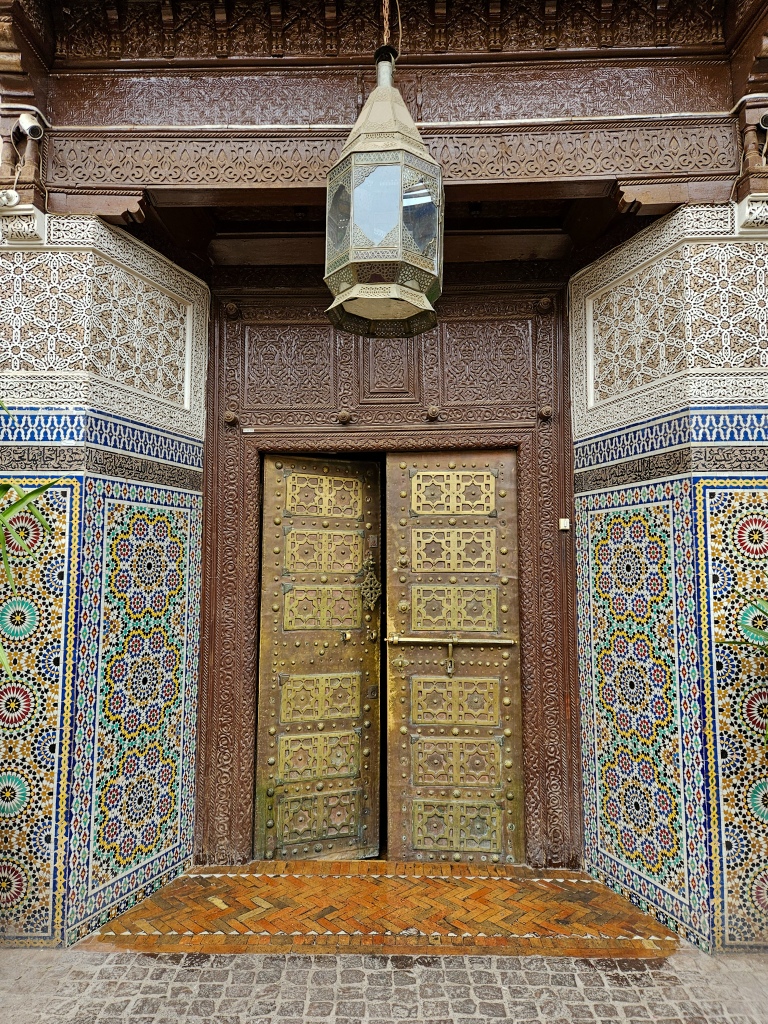
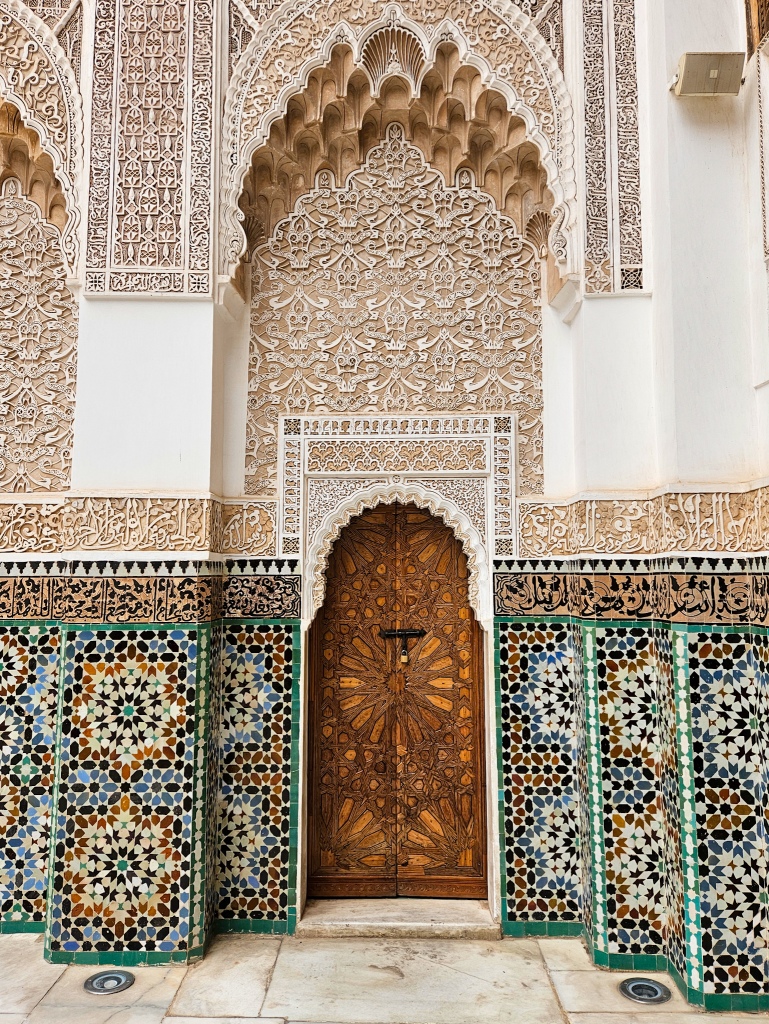
2 Day Marrakech Itinerary
Itinerary Day 1: Central Marrakech
Koutoubia Mosque
The Koutoubia Mosque is the largest Mosque in Marrakech, and one of the oldest Mosques in the country – dating back to the 12th century. Morocco is a Muslim country, and I actually visited during the Holy Month of Ramadan. There’s something very special about hearing the call to prayer ring out across the city.
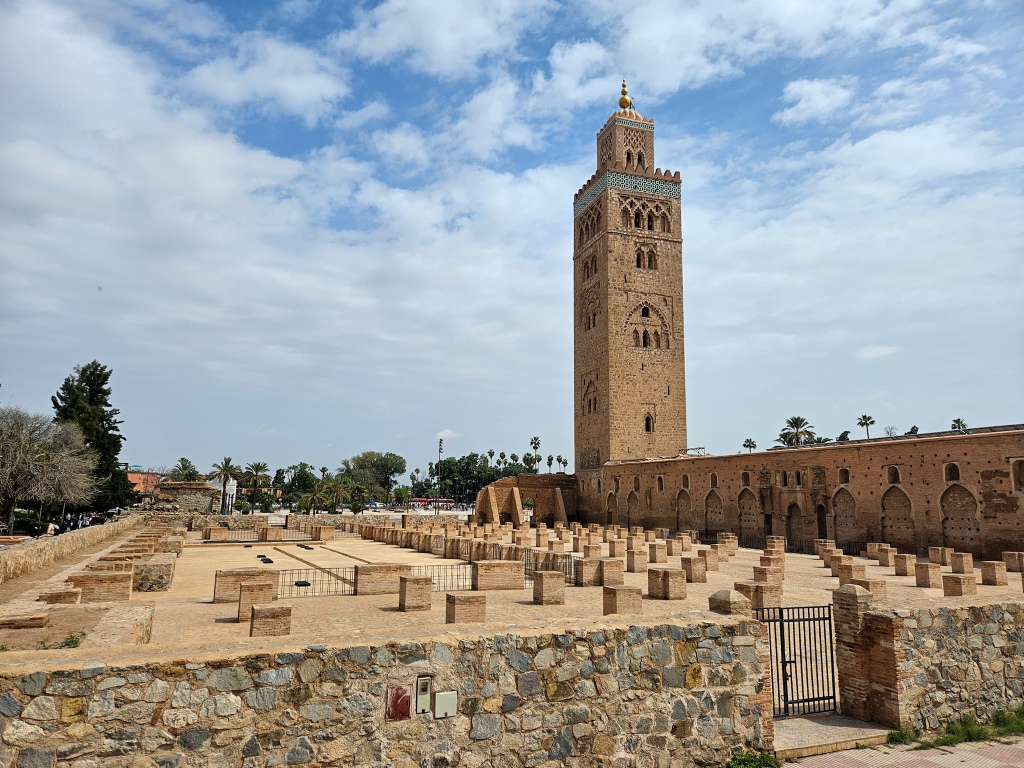
Saadian Tombs
The Saadian Tombs are an historic Royal necropolis in the Kasbah region of town, where the ancient Royal Family of Marrakech are buried. Whilst the tombs are open from 9am-4pm, from 9.30am the line to view Al Mansour’s chamber can easily reach 1hr long or more. My advice is to therefore get there for opening time – I arrived at 9.15am and had to queue for 45 minutes (and I visited in off-season in March)!
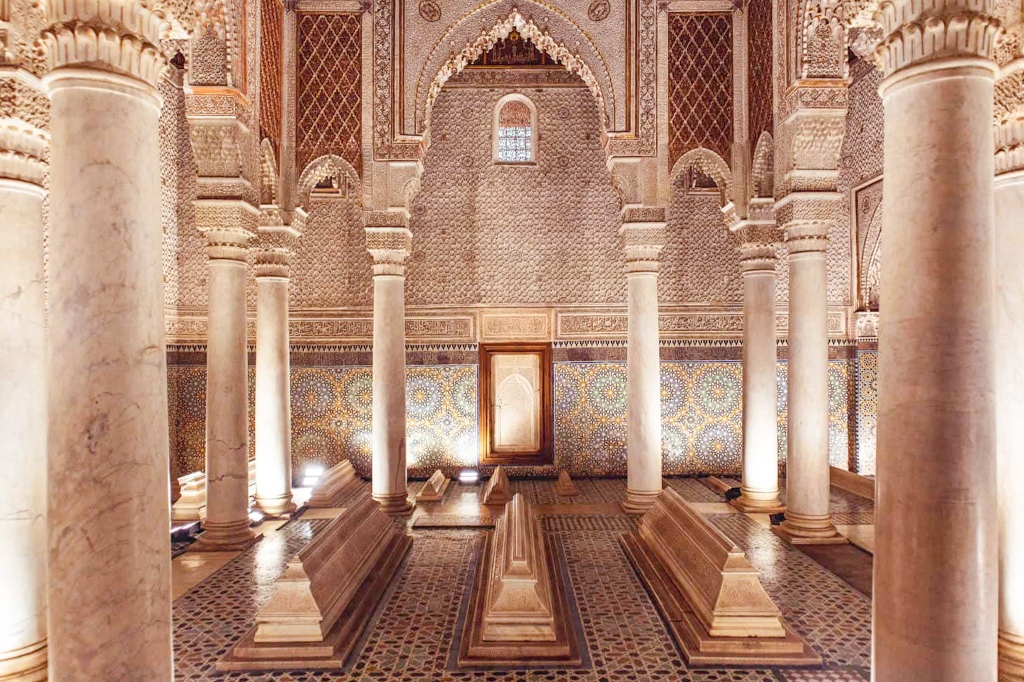
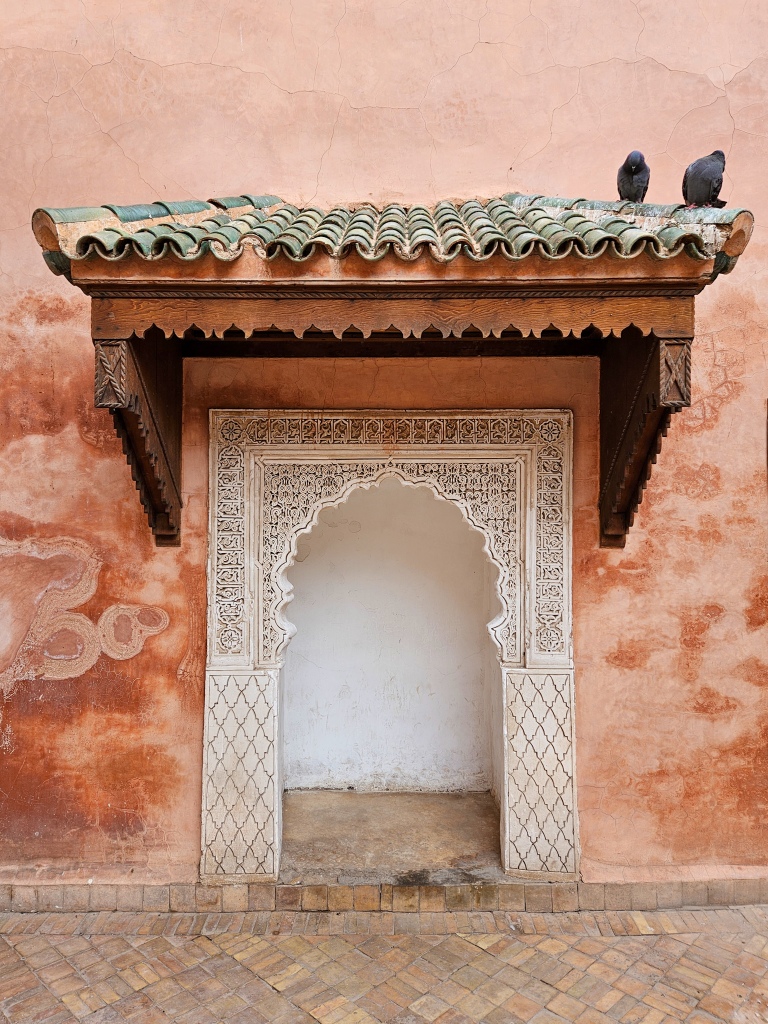
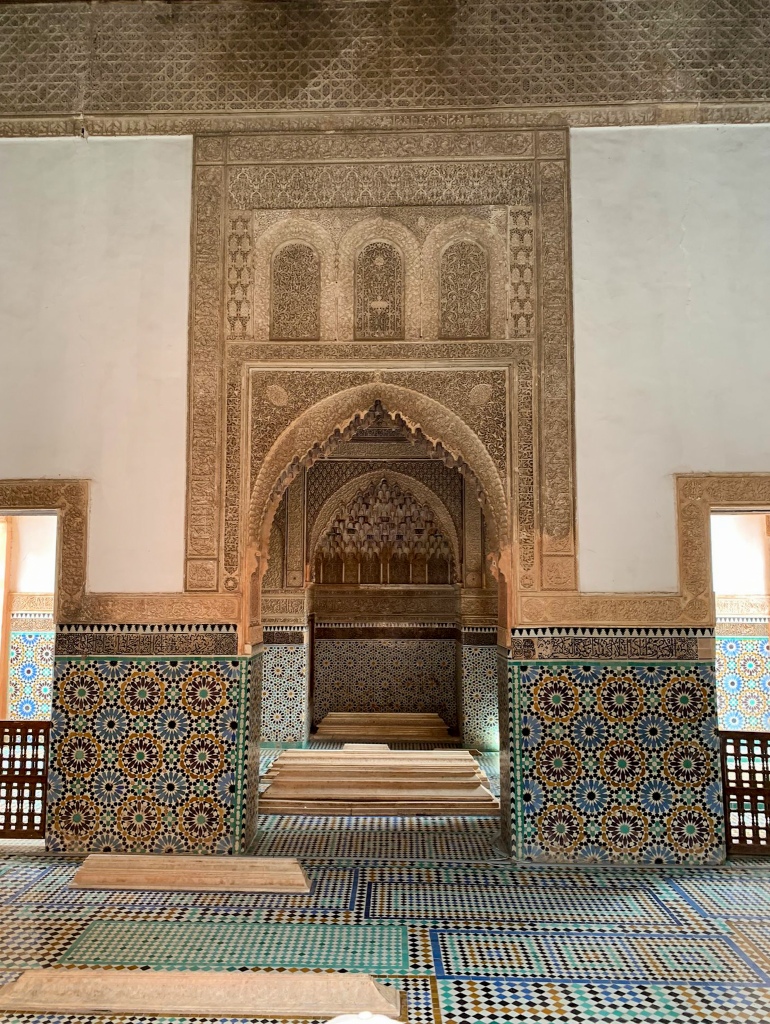
Badi Palace
Badi Palace, translating as ‘Palace of Brilliance’ is a ruined palace in the centre of Marrakech. It was commissioned by the sultan Ahmad al-Mansur of the Saadian Dynasty (whose tombs we just visited) a few months after his accession in 1578, with construction and embellishment continuing throughout most of his reign. Today it’s nice to walk around the Palace and there are a few exhibitions to explore too. However, the Palace was badly damaged by the 2023 earthquake and as such not all of the grounds were open on my visit.

Mellah (Jewish Quarter)
The Mellah of Marrakesh was created by decree of the Sultan Abdallah al-Ghalib of the Saadian dynasty in 1558, outside of the walls of the afore visited El Badi Palace. It is historically a Jewish area, and during the 16th and 17th centuries, the Mellah was one of the main commercial areas of the city. The Jewish Mellah was formed when Jews were fleeing persecution in Europe. Today, 2 synagogues remain, plus a Jewish Cemetery, Mellah Market and the Spice Market. We really enjoyed strolling the area.
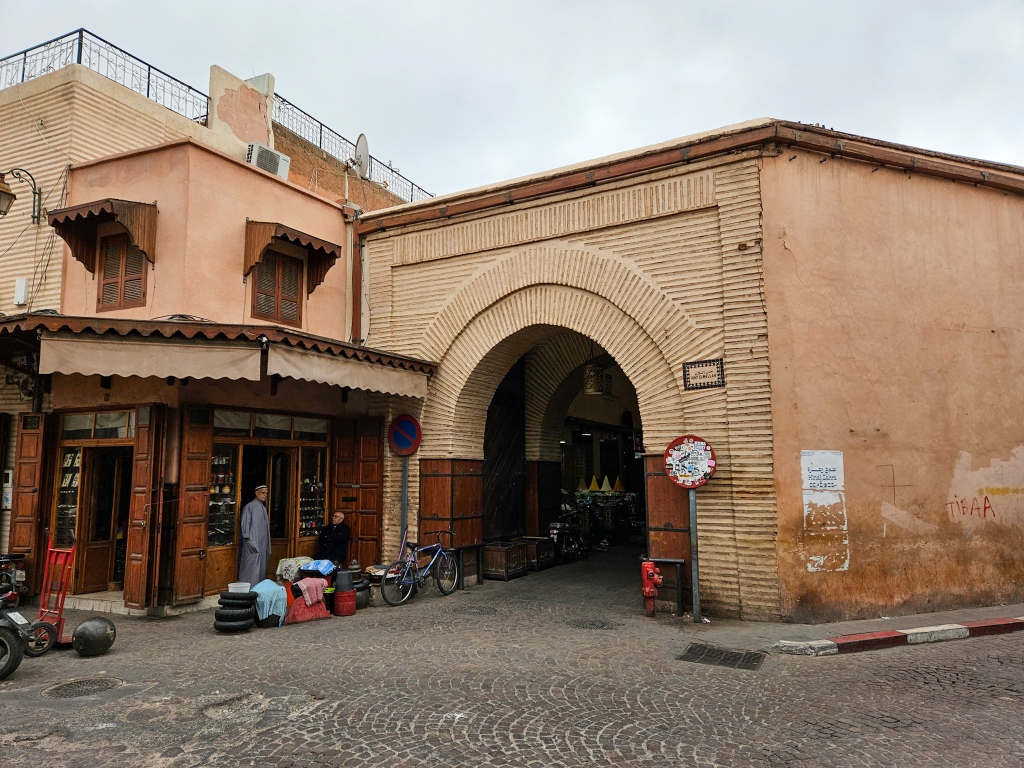
Bahia Palace
One of my highlights was this 19th Century Palace, made up of a series of Riads. In Moroccan culture, a house is built with no external windows or doors (save the entrance). Instead, all light comes from an open courtyard within, with the rooms all lying off the central, roofless opening. I absolutely love this and if the weather in England could survive it, I’d be trying it at home. Bahai Palace is made up of 5 main Riads within the Palace, and we loved them all. Be warned though, get here early or the crowds can be completely overwhelming.
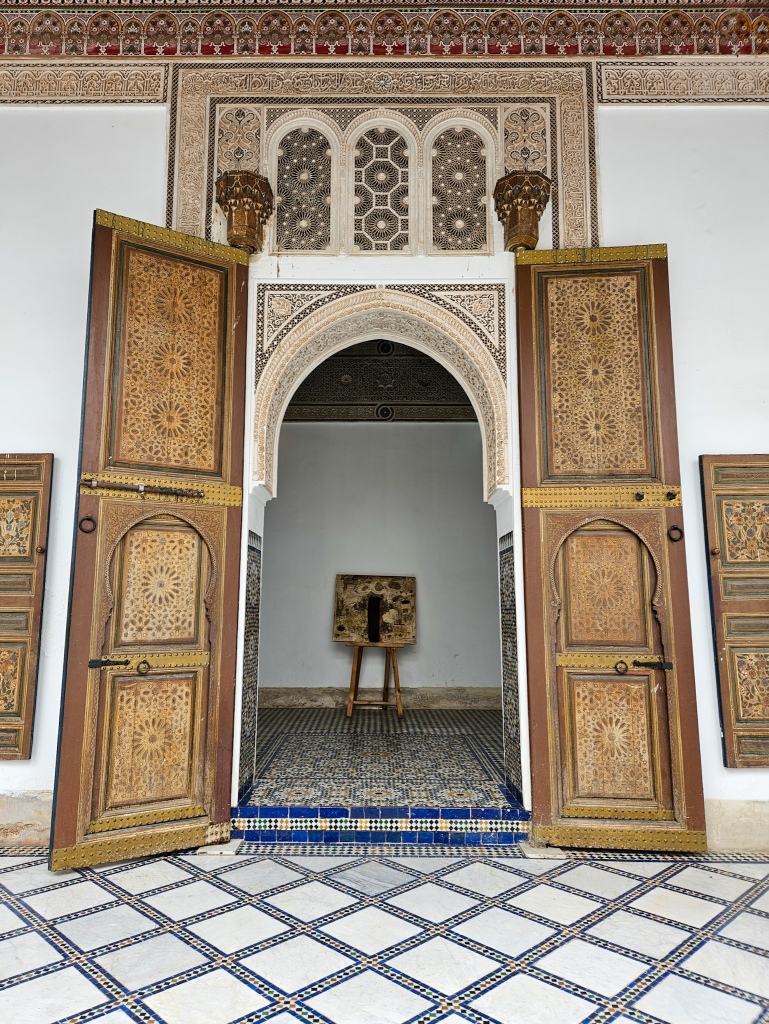
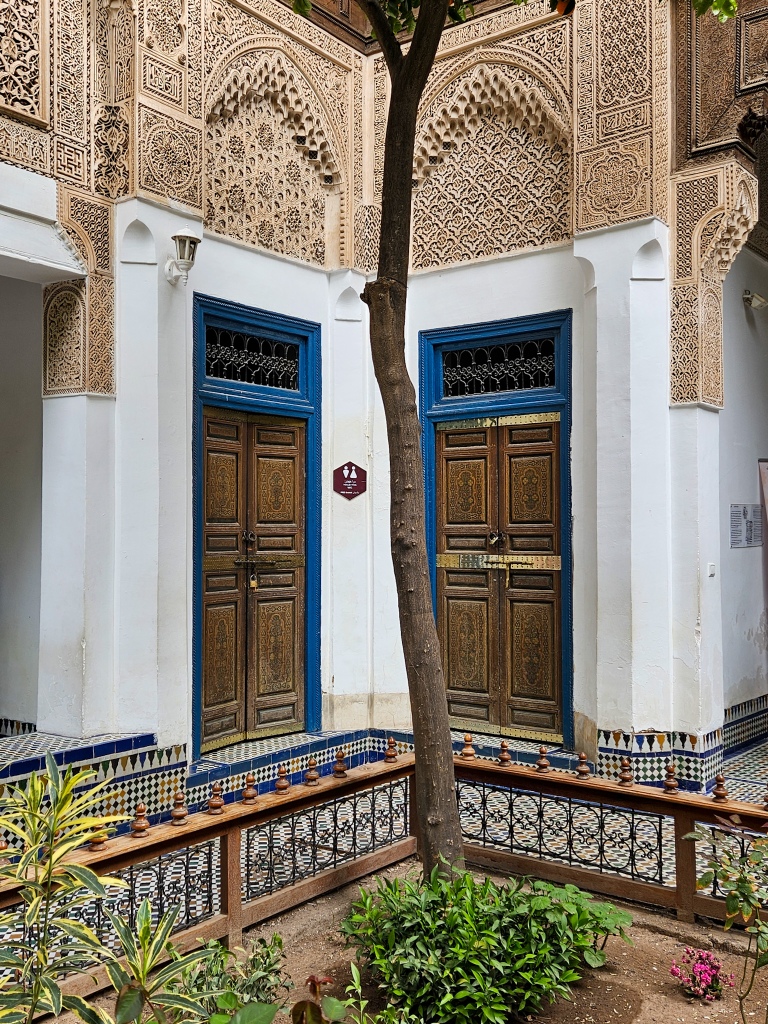


Jemaa el-Fnaa
Probably my least favourite spot on this itinerary, Jemaa el-Fnaa is the main square. In the morning it’s largely empty, by lunch time there are animals like snakes and monkeys, and everyone selling everything, and by evening it’s full of food stalls likely to give you a bout of food poisoning. I found it to be the only spot I didn’t take any pleasure in visiting, but I suppose you have to see the main ‘square’ of a city at least once.
The Souks: El Bahja, Semmarine
I was a little worried about what the Souks would be like, but I needn’t have been. The Souks just off the main square, Jemaa el-Fnaa, are a delight to explore. Souk Semmarine is one of the main arteries of the Souks, kind of like Marrakech’s equivalent to Bond Street in London, full of colours, noises and smells. It can be a bit of a sensory overload, but in small doses it was pretty magical taking it all in.
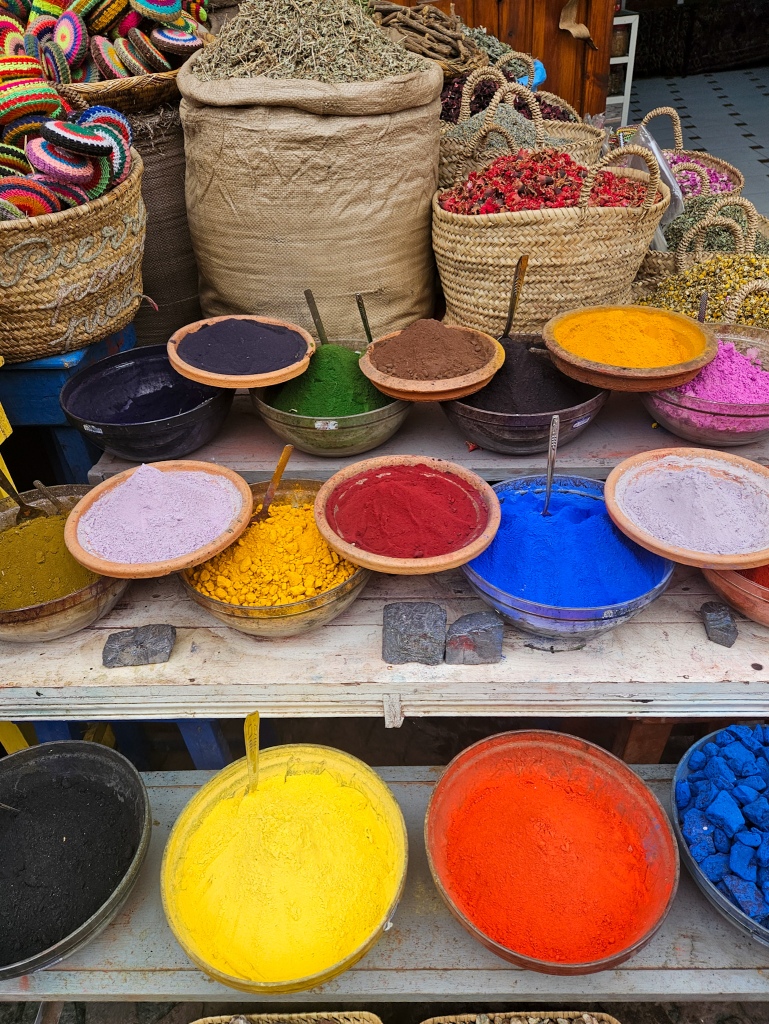
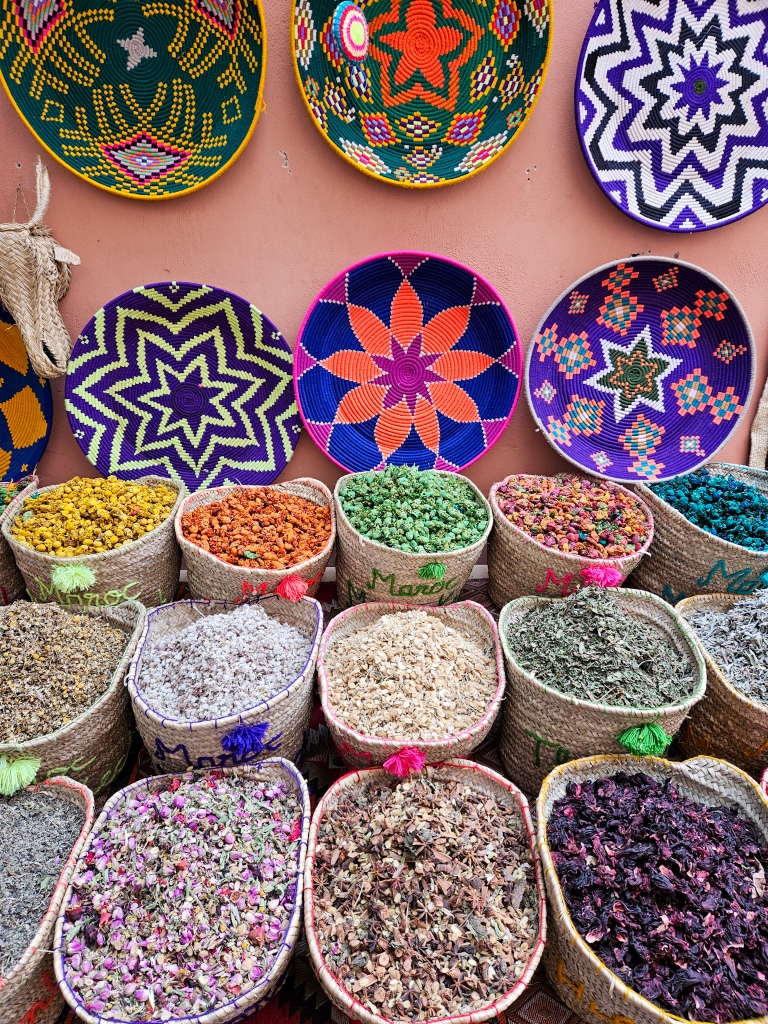
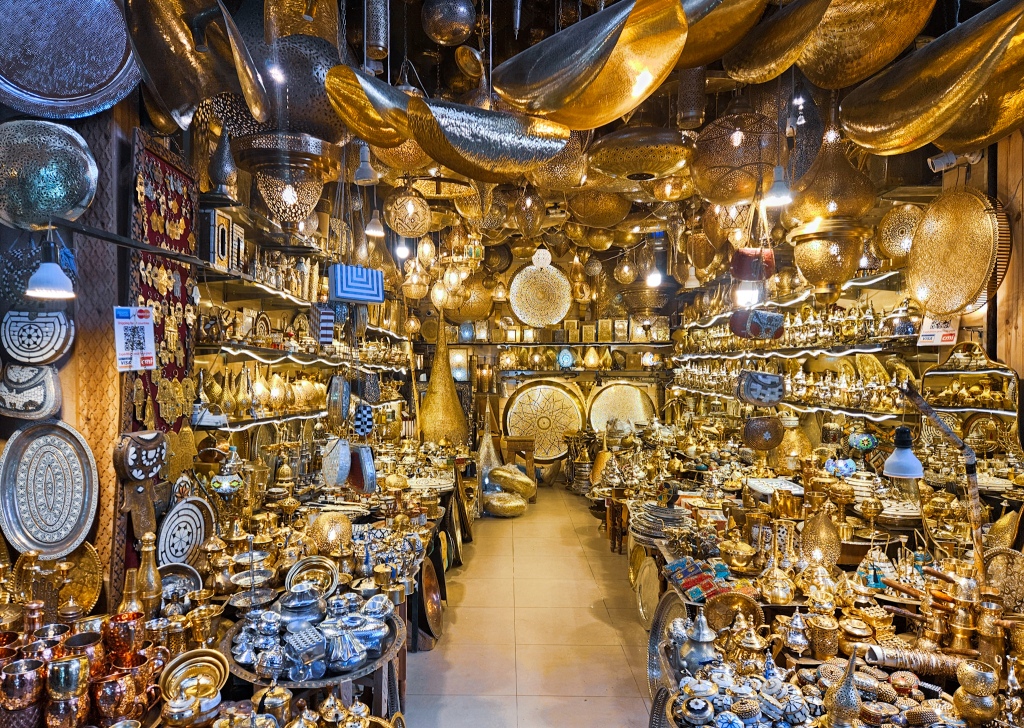
Itinerary Day 2: Jardin Majorelle and North Marrakech
Jardin Majorelle
The Majorelle Garden is a one-hectare botanical garden and artist’s landscape garden in Marrakesh, Morocco. Created in the 1920s, it’s famous for it’s blue buildings and beautiful plants. It’s easy to spend an hour or so here, and definitely one of the highlights of a trip to Marrakech. However, be warned, you have to order tickets online in advance and it is HEAVING. Plus, it’s not in the centre of town so will be a 40 minute walk if you’re staying in the Medina, or further if you’re outside of the city.
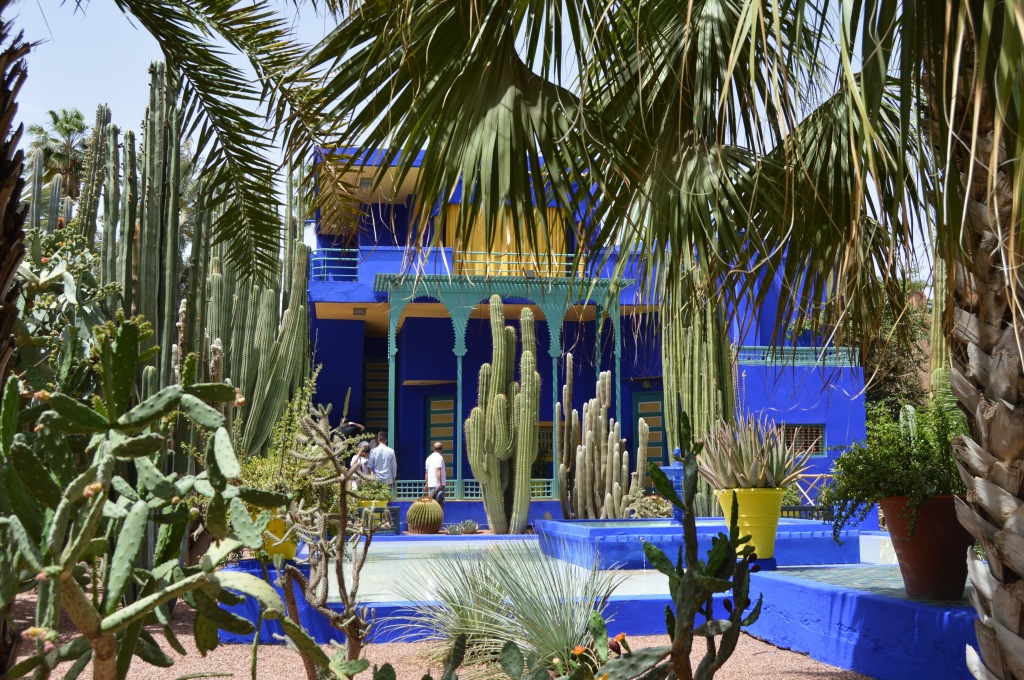
Ben Youssef Madrasa
Full Guide: HERE.
Without a doubt my favourite part of my visit to Marrakech, the Ben Youssef Madrasa is special. Once a school, founded in the 1500s by the Sultan of the time, young men came here to study. Today you can visit the courtyard, mosque and explore the rooms that students would have slept in (they are tiny, and slept up to 6 per room!). The architecture is absolutely awe inspiring, I was gawping around every corner.
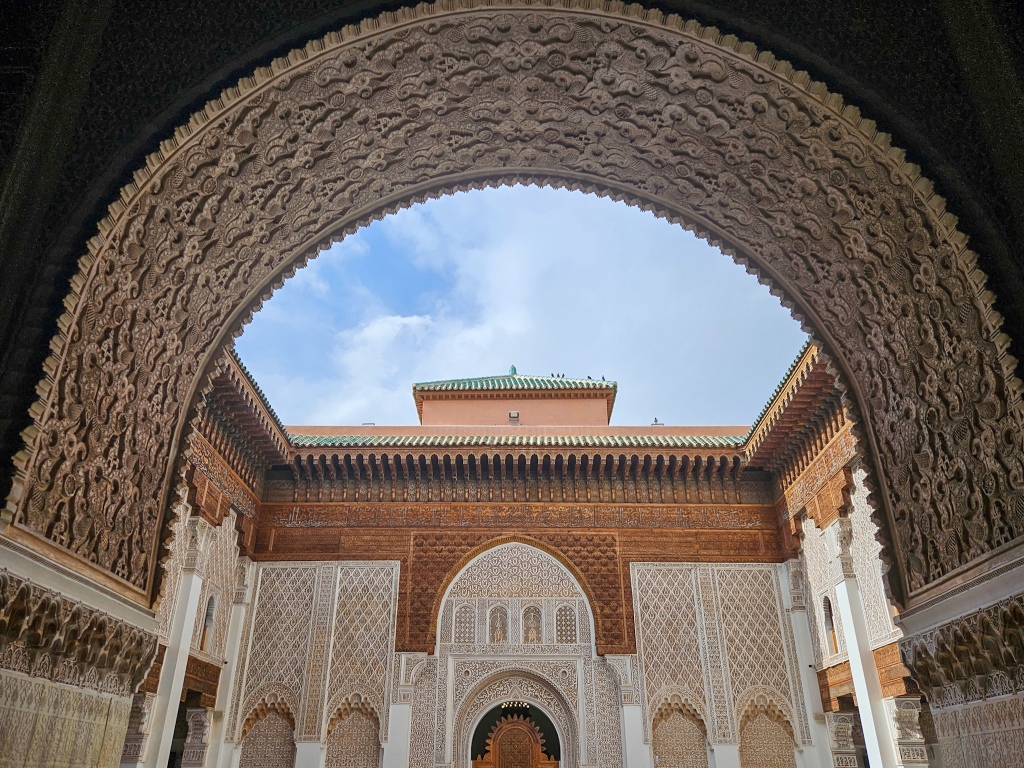
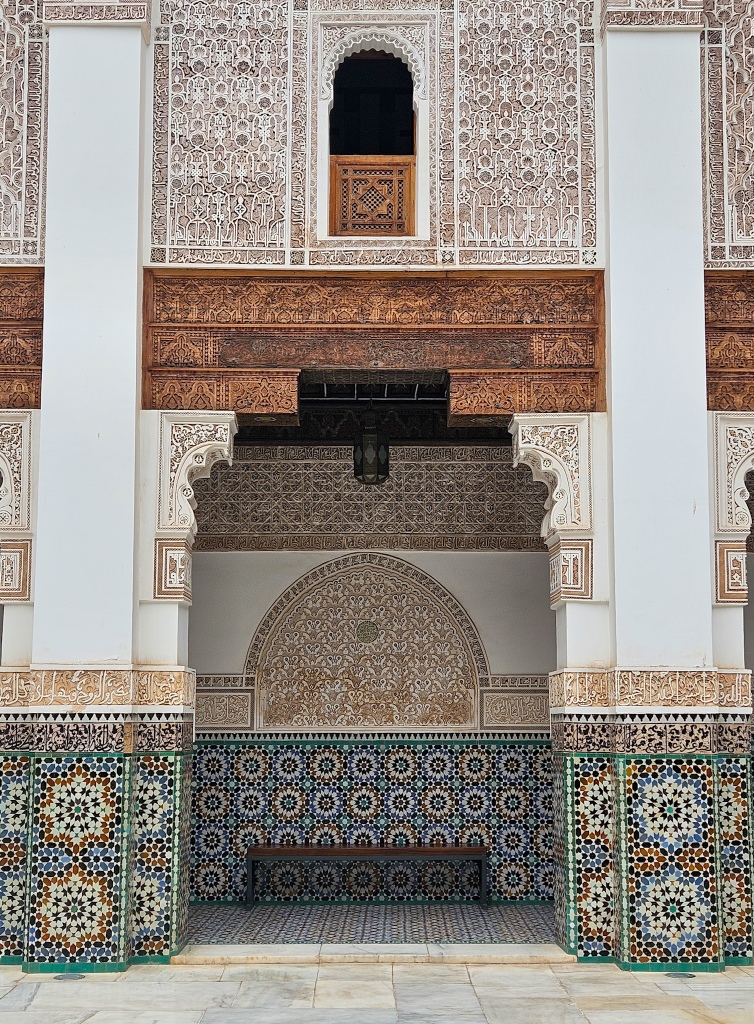
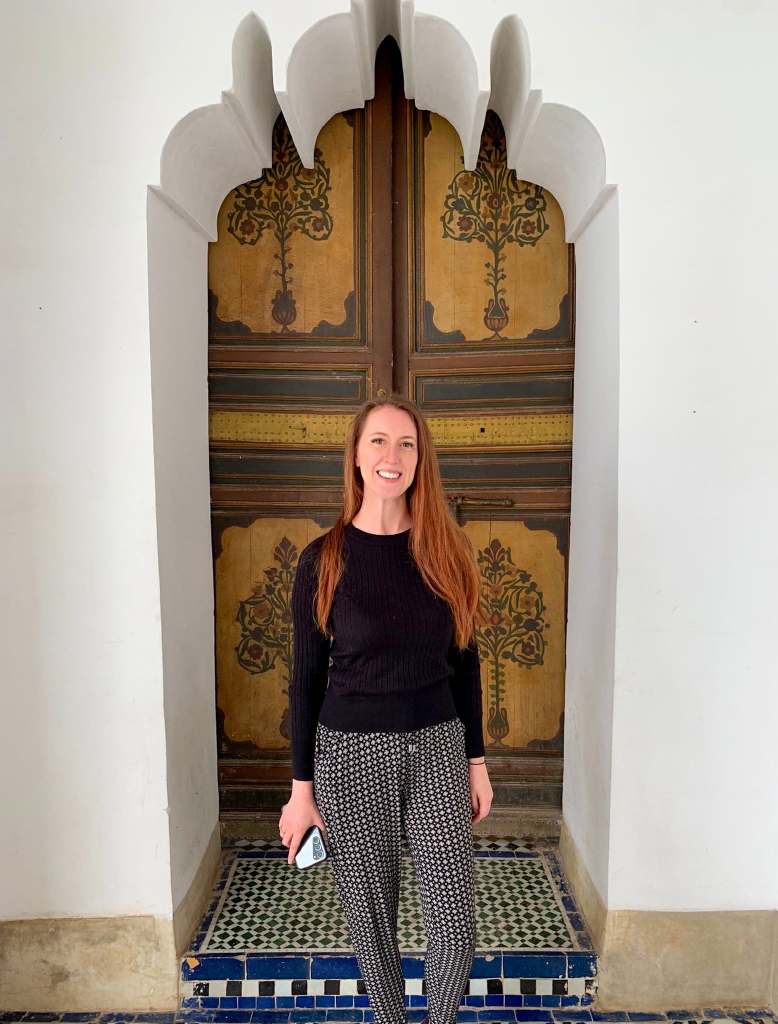
Musee de Marrakech
The Marrakech Museum isn’t a modern, interactive museum. The Museum is housed in an old Palace built in the early 1900s, and today it exhibits mainly art and a few faded educational boards. However, its appeal is in its architecture which is truly stunning, the fact that inside is an old Hammam which you can walk around, and that it’s fairly free of crowds unlike most other stops on this itinerary.

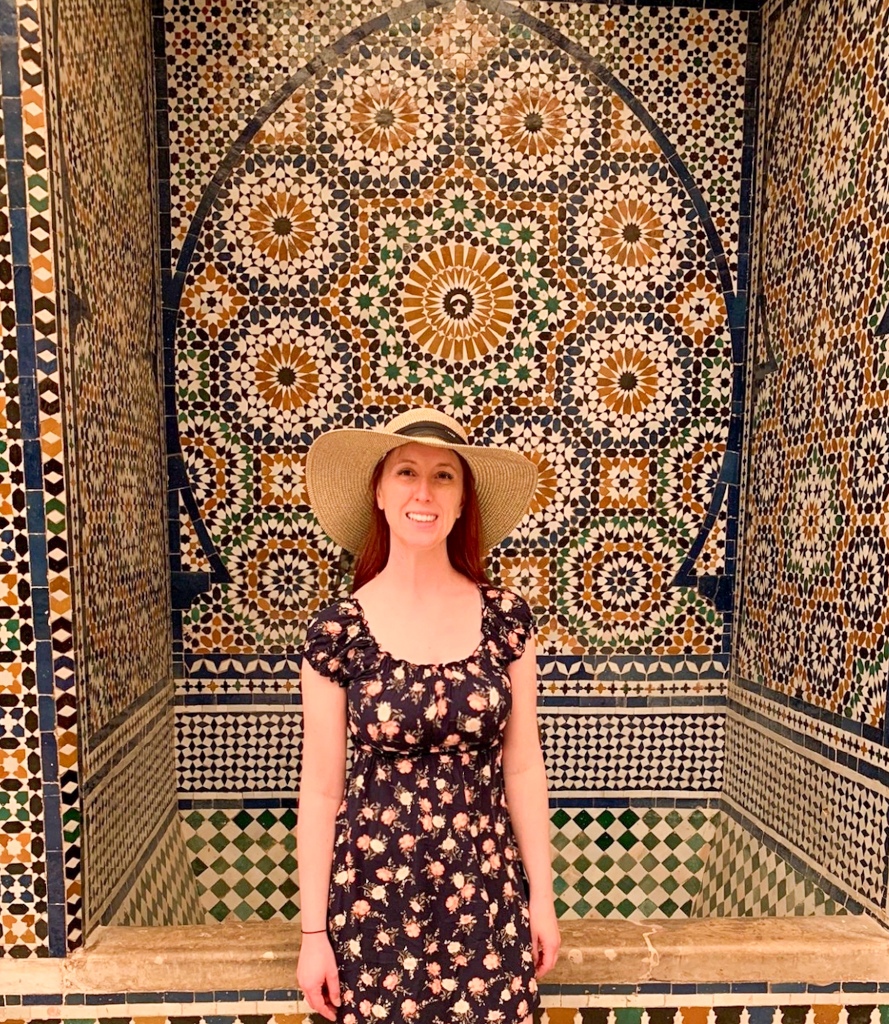
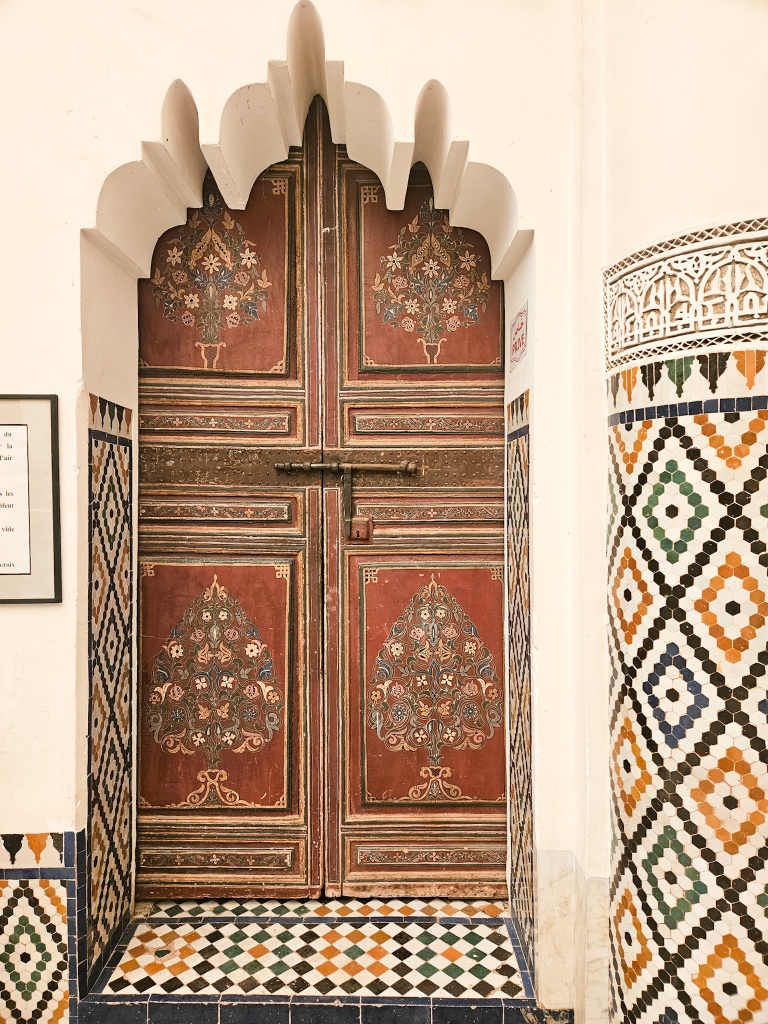
Le Jardin Secret
The Secret Garden lies in the heart of the Souks, offering respite to anyone needing to escape the bustling crowds. Home to an exotic global garden, and a traditional Islamic garden, it’s a lovely place to pause. There’s also a nice Café at the top of the tower in the garden offering beautiful views out over the Islamic part of the park.
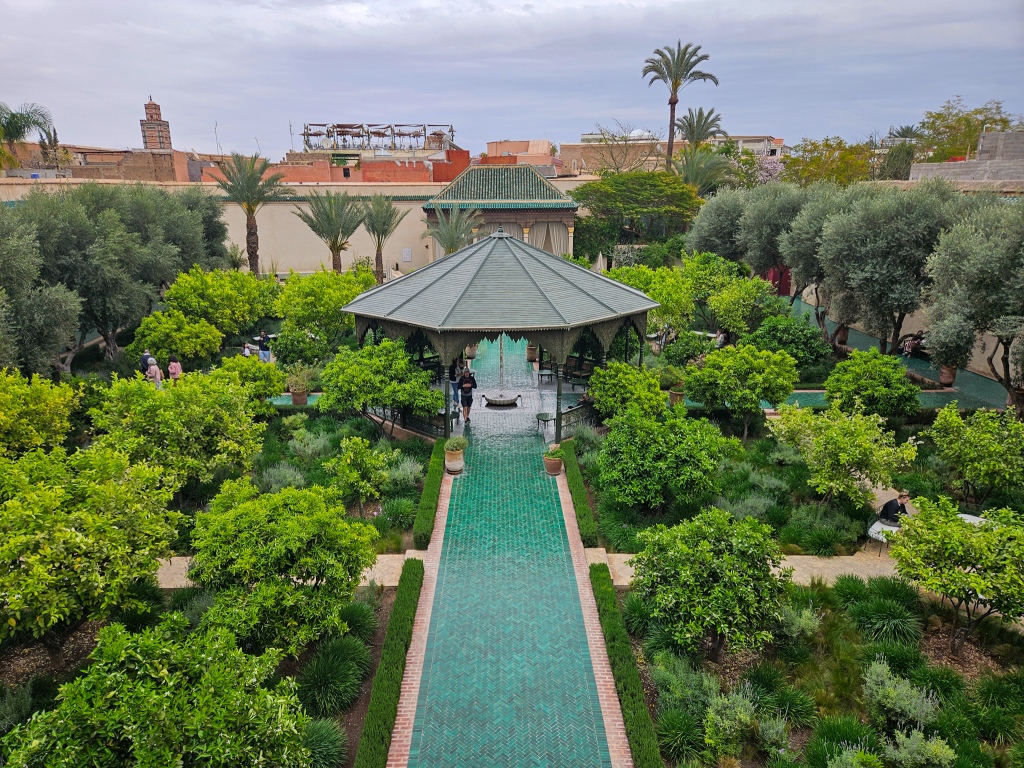
The Souks: Haddadine, Cherratin, Attarine, Babouches
As I said above, I was worried about the Souks, but I had no need to be. I actually even solo explored this section of Souks and didn’t experience anything negative. This section of Souks is the main Souk area within Marrakech’s Medina. Here you’ll find the metal, lamps and lampshades Souk (Haddadine), Leather and Bags Souk (Cherratin), Kitchen Utensils Souk (Attarine), and the famous Moroccan shoes Souks (Babouches). The shoes were undoubtedly my favourite.
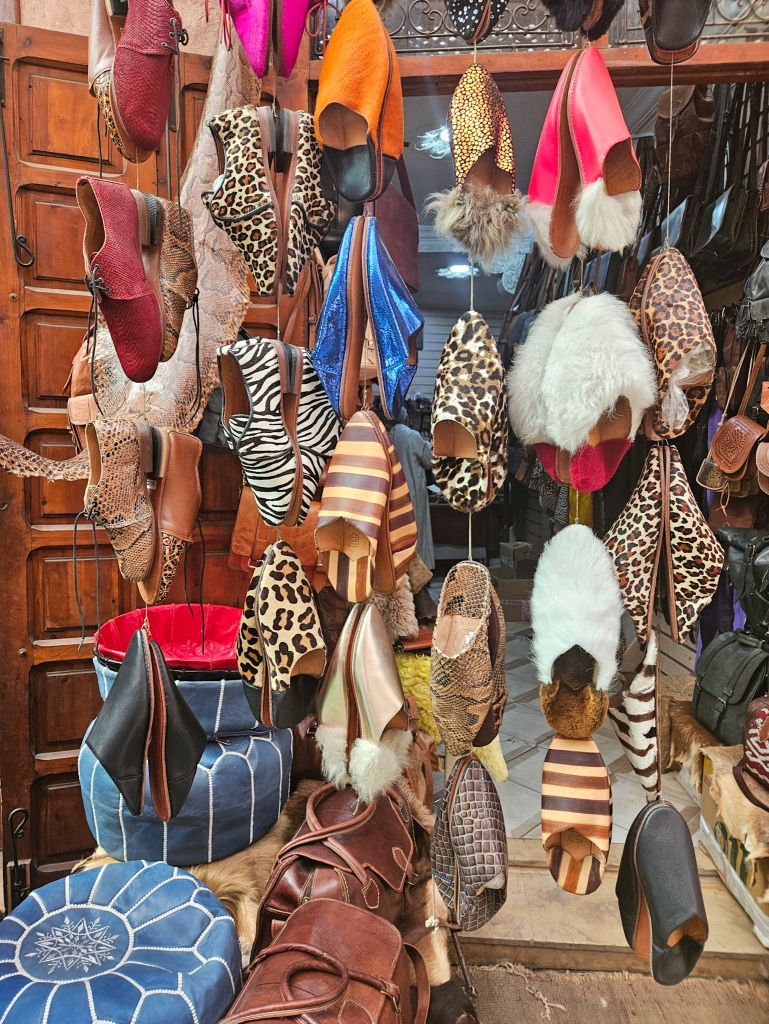
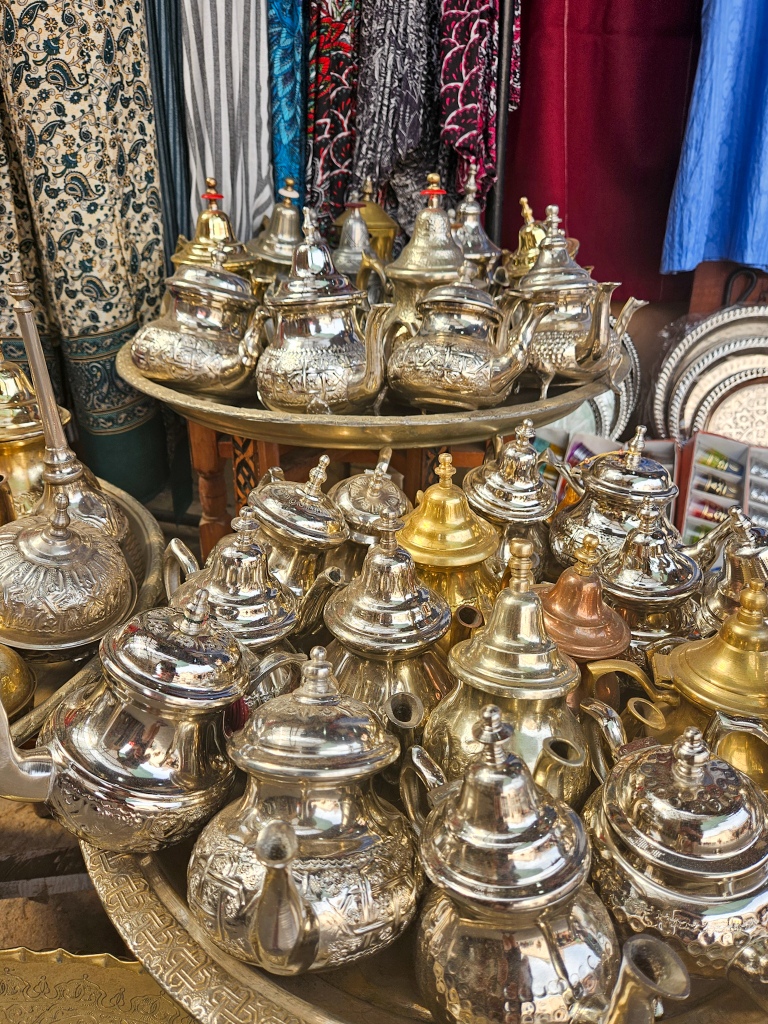
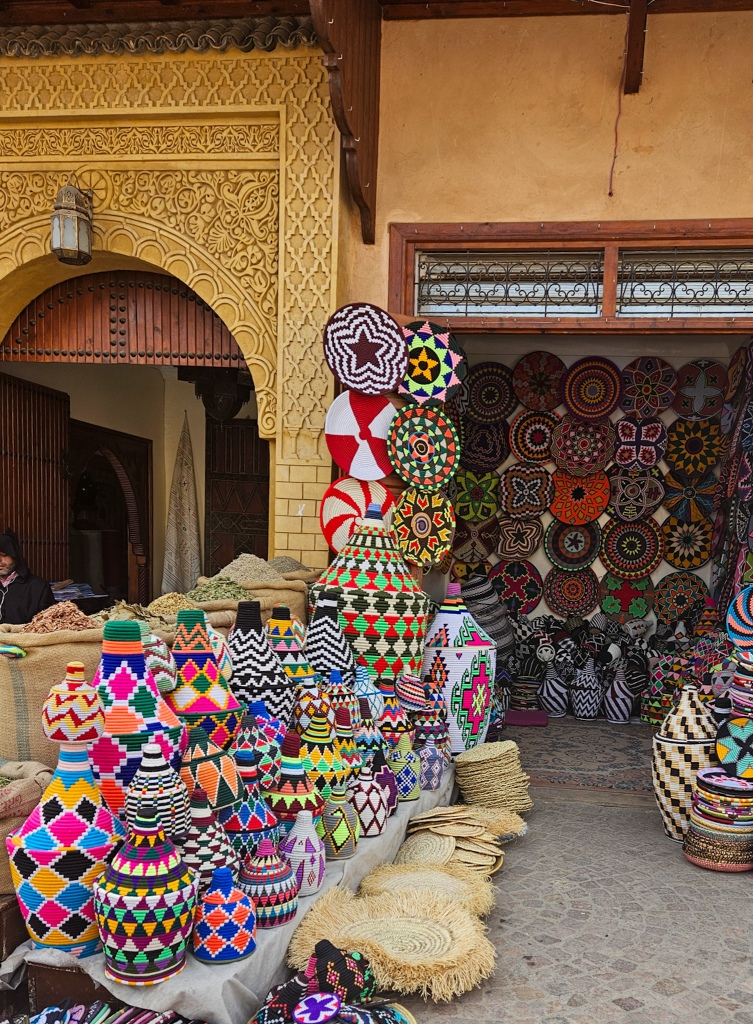
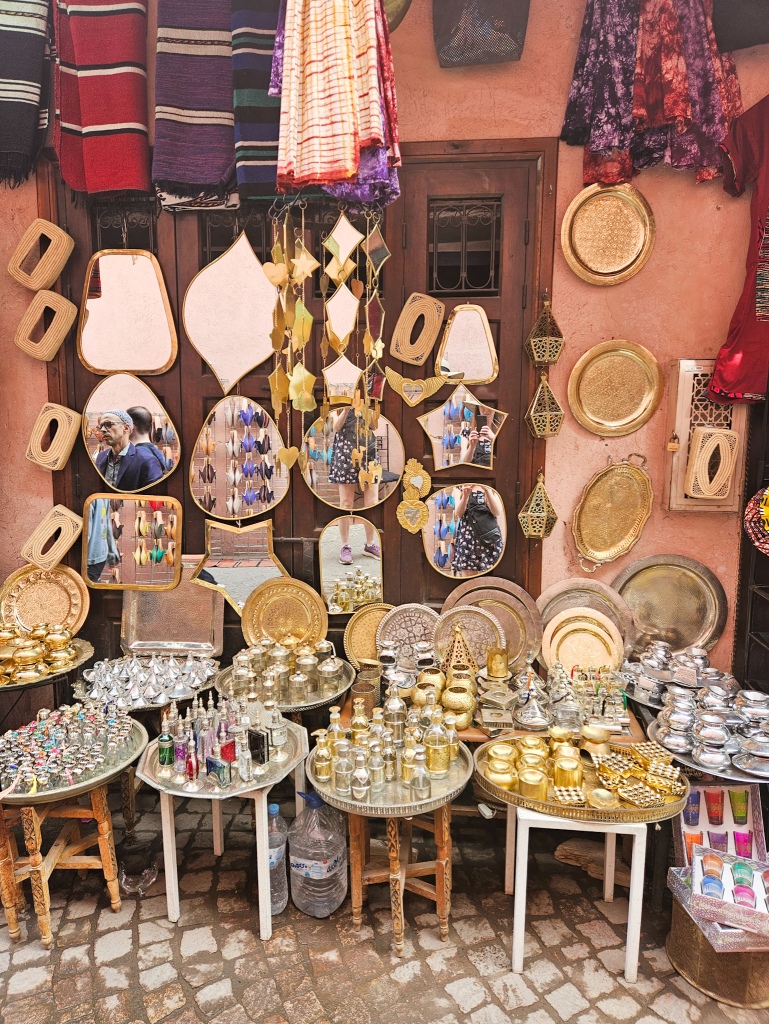
Foundouk Tadlaoui
A hidden gem to finish off the day is Foundouk Tadlaoui, just off a main Medina street. Recently restored, this beautiful courtyard is now a mini Souk in itself, home to an array of shops through its archways of traditional craftsmen and women. I loved the wooden box maker who was carving beautiful intricate boxes with his feet, the huge vases set up in the courtyard itself and the atmospheric carpets hanging everywhere. I have to confess to solo browsing in here for ages and haggling for a pot.
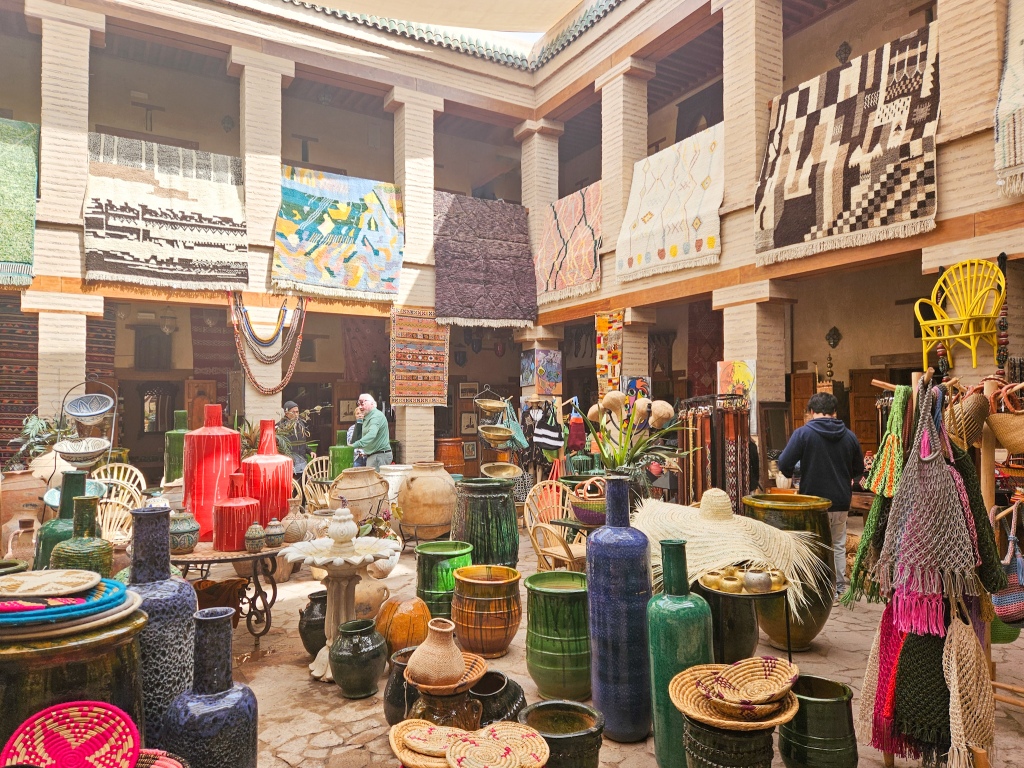
Where to stay in Marrakech
If you want an authentic Moroccan experience, then a Riad in the Medina is definitely a great option. Please just be aware of the area your Riad is in so you make sure you’re staying in a nice part of town, and don’t be taken in by Instagram – make sure it’s fire safe and a reputable hotel. I didn’t choose a Riad as I couldn’t find a central one I was 100% confident in (probably an over reaction due to my friend’s experience, mentioned above in the safety section), and instead opted for a hotel outside the centre of town.
The Oberoi Marrakech, my choice for a few nights, was out of this world – I loved staying there so much I even plan to return (which is rare for me). For other hotel options, there are a number of high end gorgeous properties just outside the Medina, including La Mamounia, and Royal Mansour. There are also a number of chain hotels such as Ibis, Novotel and Radisson and something to suit every budget.
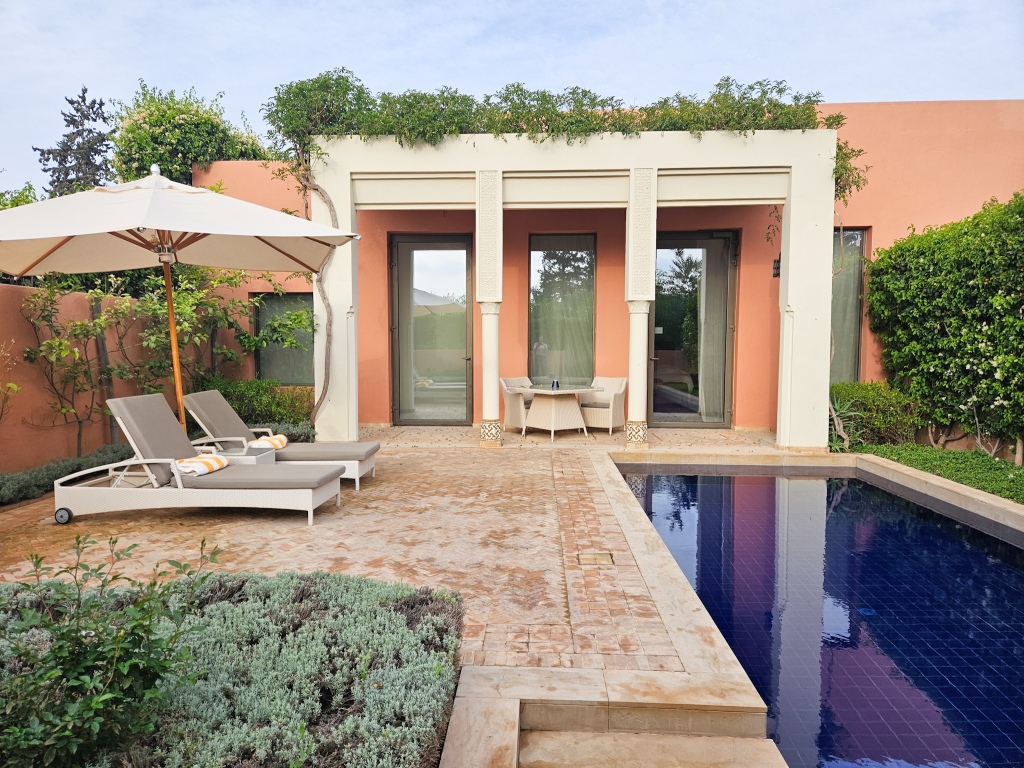
So there you have it – what do you think of Marrakech? I really fell in love with the city and highly recommend it. I will definitely return one day to make sure I see the nearby Atlas Mountains and manage a trip in to the desert. Thanks for reading – stay safe and happy travelling!

Leave a comment